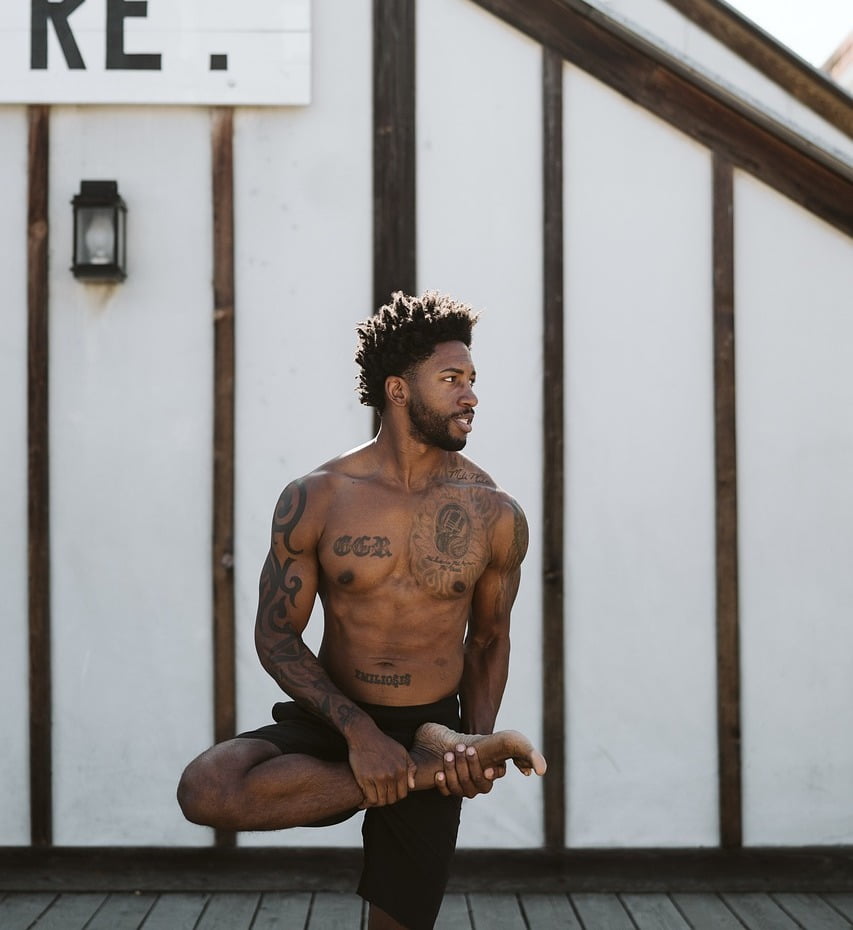Introduction
If you’re an avid runner or engage in sports like soccer, you might be familiar with sharp knee pain, likely indicating runner’s knee or iliotibial band syndrome (ITBS). This condition typically causes pain on the outside of the knee, especially during or after running. As you increase your physical activity, symptoms can worsen. Fortunately, with proper muscle and fascia training, you can effectively manage and treat runner’s knee. This guide will explore what runner’s knee is, its symptoms, causes, duration, treatment options, and prevention strategies.
Runner’s knee, or iliotibial band syndrome (ITBS), involves the iliotibial band, a tough fascia that helps stabilize the hips and knees during running. This band runs from the pelvis, down the side of the thigh, and across the knee to the top of the calf bone. When the interaction of muscles like the glutes and tensor fasciae latae becomes imbalanced, it causes excessive strain on the thigh bone, leading to pain on the knee’s outer side. Proper muscle interaction and balance are crucial to prevent this discomfort.
Runner’s knee symptoms include sharp pain on the knee’s outer edge, often starting after running a certain distance. This pain signals excessive strain and should not be ignored. Key indicators are swelling, pain with minimal exertion, redness, heat, and sharp pain when initiating movement. It’s advisable to get a medical examination to rule out cartilage damage and other musculoskeletal issues. A professional gait analysis can also help improve running technique and prevent future issues.
Runner’s knee is caused by excessive strain due to myofascial shortening, hardening, restricted mobility, and lack of strength. Contributing factors include restricted mobility of the tensor fasciae latae, lack of glute strength, overpronation of the foot, and poor pelvic stability. These issues cause increased tension and friction on the iliotibial band, leading to pain on the knee’s outer side. Addressing these factors through targeted exercises and proper technique can help prevent and treat ITBS.
With proper treatment, runner’s knee discomfort can be alleviated relatively quickly, though full healing of tendons, fascia, and ligaments can take up to 12 weeks. It’s crucial to gradually increase running distances and intensity during the first few weeks to prevent re-injury. Consistently follow rest guidelines, choose appropriate running shoes, and adhere to exercises designed to self-treat runner’s knee for effective recovery and prevention of future issues.
Rest is crucial during corrective exercises for runner’s knee. Continuing to irritate the area can delay healing and reverse progress. Ensure you maintain even weight distribution while running to prevent recurrence. Allowing your body to regain balance is essential to avoid chronic ITBS. Rest thoroughly and resume activities gradually to support long-term recovery and prevent runner’s knee from becoming a persistent issue.
A knee bandage can offer support and stability, though it may increase pain in some cases. Experiment to find what works best for you. Choosing the right running shoes depends on your biomechanics, tension balances, and running technique. Insoles can help with overpronation. Adapting your running technique to use foot arches and fascia as cushioning structures, akin to barefoot running, can also be beneficial. Transition to barefoot running shoes gradually to allow time for adaptation.
Midway through ITBS treatment, focus on fascia training and strengthening exercises for muscles stabilizing the pelvis and hips. Relaxing the tensor fasciae latae and hip flexors helps return hips to their natural position. Strengthening the muscles in the buttocks and core is essential for long-term running health. Proper foot pronation is crucial for stability, with barefoot running and big toe exercises being effective in maintaining correct foot and knee alignment.
Preventing runner’s knee involves optimizing your running style and incorporating diverse movements like side steps, cross-steps, and running on varied surfaces. Ensure you have suitable footwear and sufficient recovery time. Regular exercises using JACKEDAPE® products can prevent myofascial imbalances, helping to maintain healthy muscle and fascia balance, reducing the risk of developing runner’s knee.
Conclusion
Runner’s knee is a common issue for runners and athletes, but with the right knowledge and techniques, it can be managed effectively. Understanding its causes, symptoms, and treatment options is key to recovery and prevention. By maintaining proper running form, using appropriate footwear, and incorporating targeted exercises, you can prevent and treat runner’s knee, ensuring a pain-free and enjoyable running experience.
Common symptoms include sharp pain on the knee’s outer edge, swelling, redness, and pain when starting to move.
Poor technique can lead to imbalances and excessive strain on the iliotibial band, causing friction and pain.
Yes, exercises focusing on fascia training, strengthening stabilizing muscles, and correcting foot pronation are effective.
Seek medical advice if you experience severe pain, swelling, redness, or if symptoms persist despite treatment.
Choose shoes that support proper biomechanics and consider insoles for overpronation. Gradually transition to barefoot running shoes if appropriate.
Rest until pain-free, gradually increasing activity levels to avoid re-injury and ensure proper healing.
Optimize running technique, use appropriate footwear, incorporate diverse movements, and maintain balanced muscle and fascia health.
Also interesting
Comprehensive Guide to Trigger Point Massage and Its Benefits
Learn about the benefits of trigger point massage, how it works, and the differences between...
Effective Foam Rolling: Relieve Back Pain from Prolonged Sitting
Discover how foam rolling can alleviate back pain caused by long periods of sitting. Learn...
Comprehensive Guide to Treating and Preventing Runner’s Knee (ITBS)
Learn about the symptoms, causes, and effective treatments for runner’s knee (ITBS). Discover practical tips...
Understanding and Managing Herniated Discs: Comprehensive Guide
Learn about the symptoms, causes, and effective treatments for herniated discs. Discover practical tips to...
Effective Tips to Relieve and Prevent Neck Pain – Comprehensive Guide
Discover the causes, symptoms, and remedies for neck pain. Learn practical tips to alleviate and...
Understanding and Relieving Chest Pain: Causes, Symptoms, and Solutions
Discover the causes and symptoms of chest pain and learn effective methods to relieve discomfort....
Effective Strategies to Relieve and Prevent Knee Pain – Comprehensive Guide
Explore the causes, symptoms, and remedies for knee pain. Learn practical tips to alleviate and...
Complete Guide to Managing Hip Pain: Causes, Symptoms, and Treatments
Hip pain can be a debilitating condition, affecting your daily life. This comprehensive guide covers...













